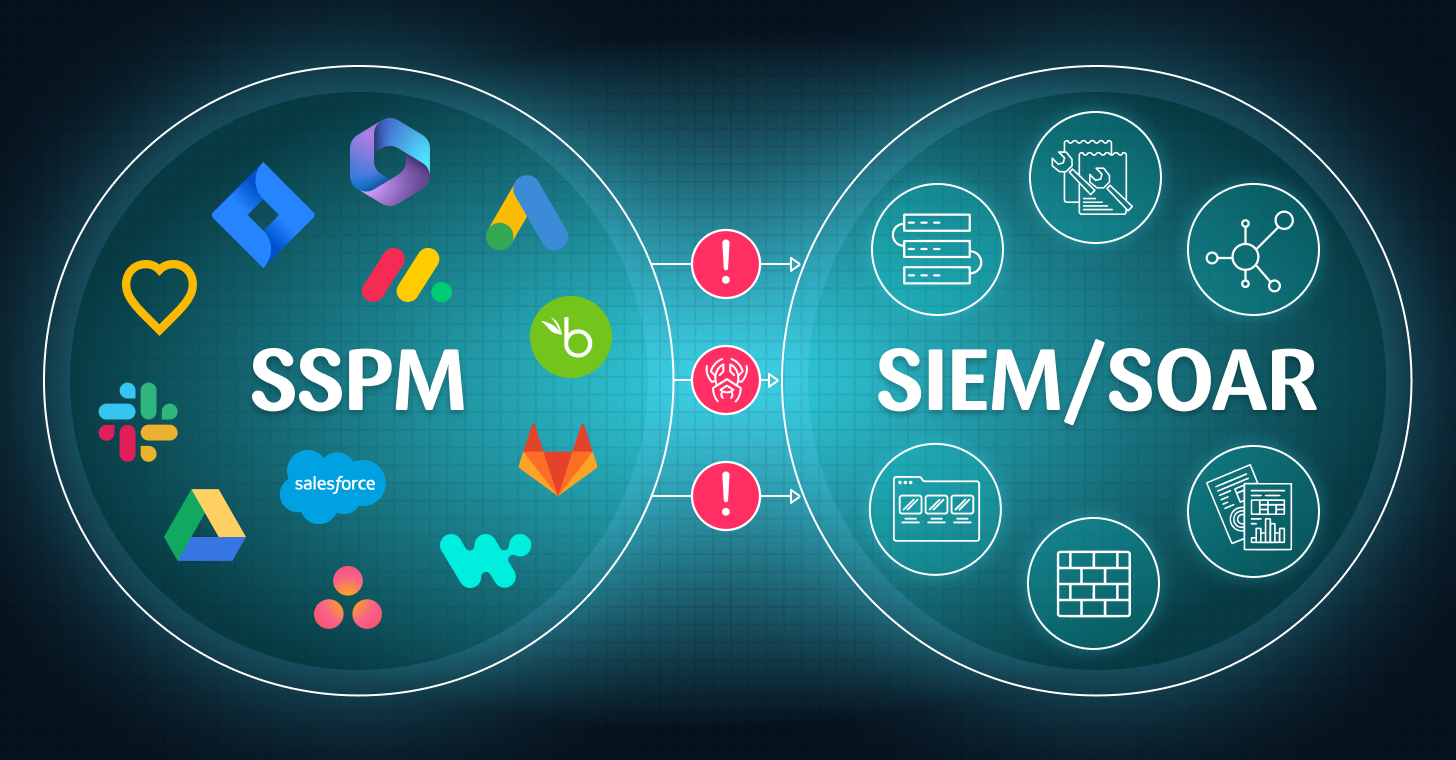Oftentimes, there is a disconnect between identifying SaaS Security weak spots and remediation. Your SaaS Security Posture Management (SSPM) platform may have detected that MFA is turned off for admins, or a threat that requires immediate intervention by either the security team or the app owners.
SIEM/ SOAR
Security Orchestration, Automation, and Response (SOAR) and Security Information & Event Management (SIEM) tools are the heavy lifters in the world of cybersecurity remediation. They are given marching orders from a number of different security tools, and then they implement them within the applications with which they are integrated.
SOARs and SIEMs are specialists in workflow automation. They automate routine tasks, so security team members can focus their efforts on more complex tasks. They also respond to threats before they can harm business operations. As a centralized platform, SOARs and SIEMs can help coordinate any type of incident response across different teams.
SSPM
SSPM, or SaaS Security Posture Management, is a comprehensive cloud security solution designed to assess, monitor, and enhance the security posture of Software as a Service (SaaS) applications. It offers organizations real-time visibility into their SaaS environments, helping them proactively identify and mitigate security risks to ensure a robust and resilient cloud infrastructure.
SSPM and SOAR: Ideal Security Partners
SSPMs and SOARs are an ideal security combination. SSPMs find security misconfigurations and identify high-risk elements within the SaaS stack. However, they are rarely designed to remediate issues.
Automating this portion of SaaS security is essential. A recent Adaptive Shield report found large organizations have over 10,000 high-risk third-party apps connected to their core stack. Combine that with thousands of user accounts, tens of thousands of configurations, and thousands of resources that must be securely stored within the SaaS stack, and it’s evident why manual remediation approaches are a partial solution at best.
SOAR-driven automated remediation is essential to limiting risks and handling threats. In the world of securing SaaS apps from threats, that means providing the SOAR with detailed SaaS risks and mediation directions.
Organizations are leveraging SOAR for efficient incident response. Those tools are being powered by pre-written playbooks from SSPM platforms, which engage the SOAR and share workflows for Torq, Cortex Demisto, Chronicle, and others. Combining SSPM with SOAR automates remediation, and enables small security teams to secure large swaths of their SaaS stack.
SSPM and SOAR in Action
There is no shortage of use cases driving SSPM and SOAR to work together.
Automated Deprovisioning
Every organization can set its own policy for deprovisioning users, and in most cases, it can be adapted based on the application. Application configurations can be set to issue an alert once users have passed the dormant-user threshold. The SSPM passes the data to a SOAR, which accesses the application and removes privileges or shuts down the account for dormant users.
For a better understanding, see our example covering automated offboarding using Adaptive Shield’s integration with Torq.
Threat Response
When a SaaS app’s Identity Threat Detection and Response (ITDR) mechanism finds a user behaving anomalously in a way that could compromise the application or its data, it can use SOAR to respond. Users who are downloading an uncharacteristic volume of data can trigger a playbook that immediately disables the user account.
Collaborating to Secure SaaS
Collaboration is one of the core tenets of SaaS applications, so it is fitting that it takes SSPMs and SOARs to work together to secure applications. SSPMs monitor the attack surface, and scan for any vulnerabilities that could harm the SaaS stack. Once alerted to an issue, SOARs remediate the issue, enabling security teams to quickly handle problems that might have taken days to fully close if done manually.



















